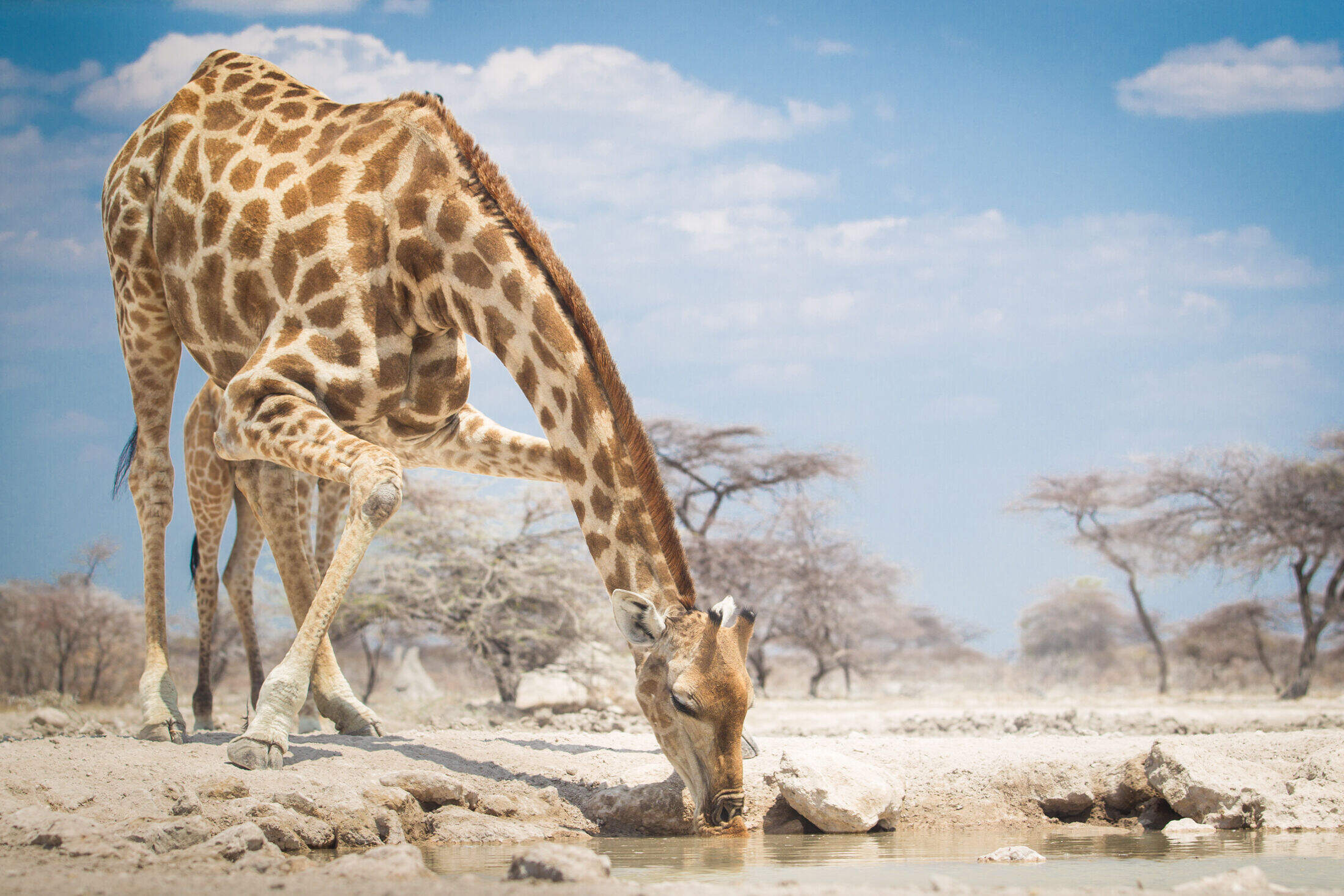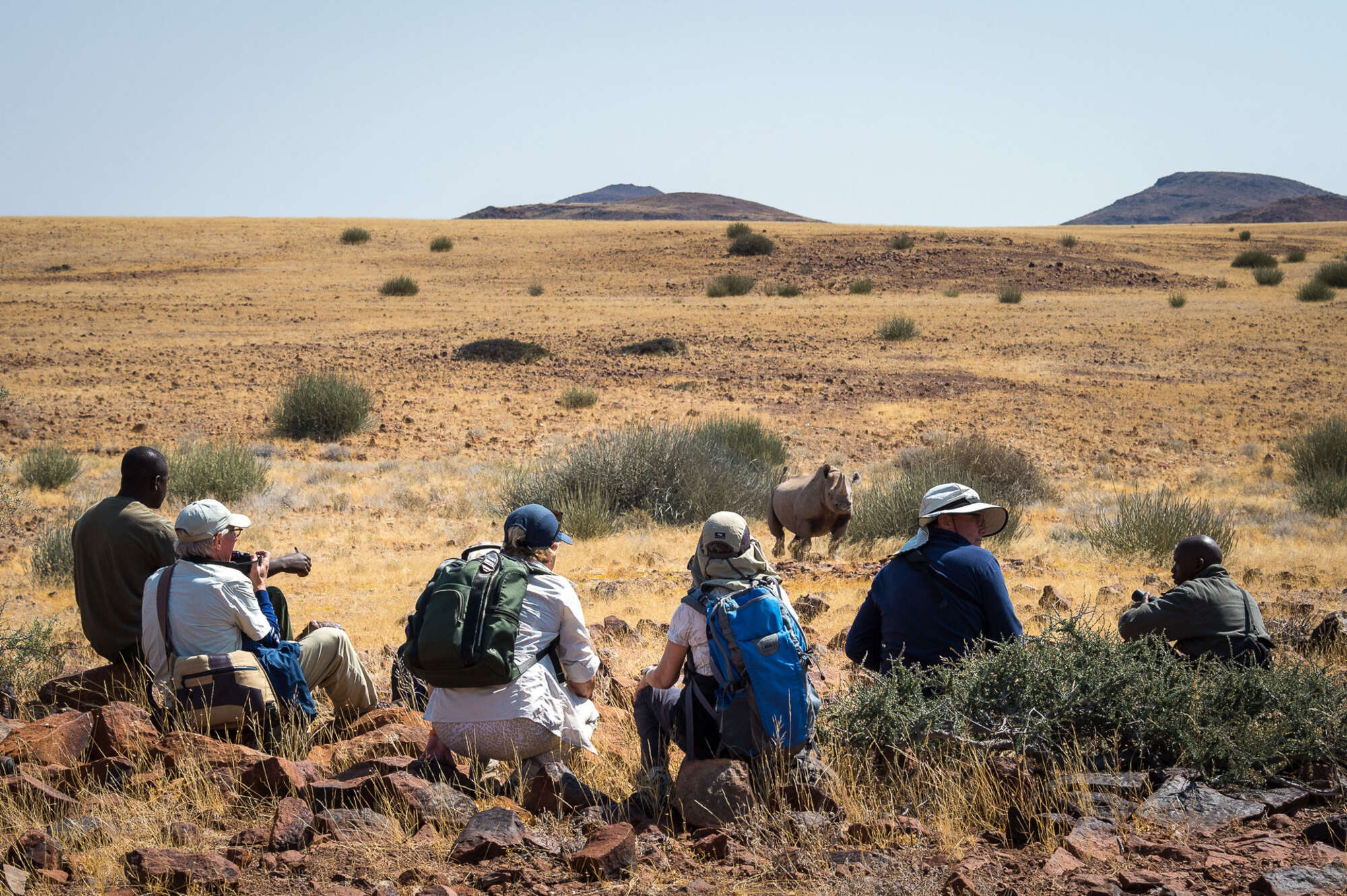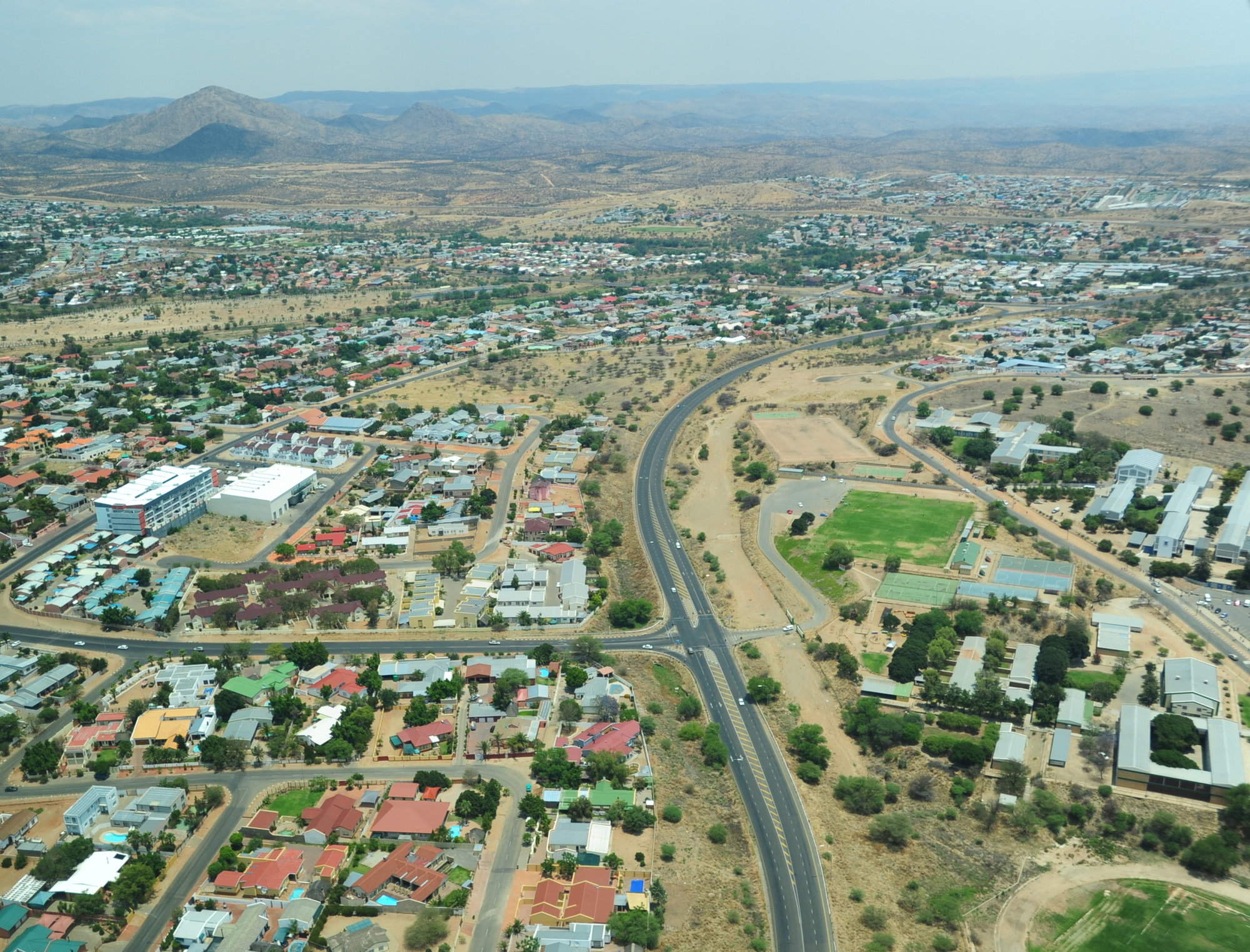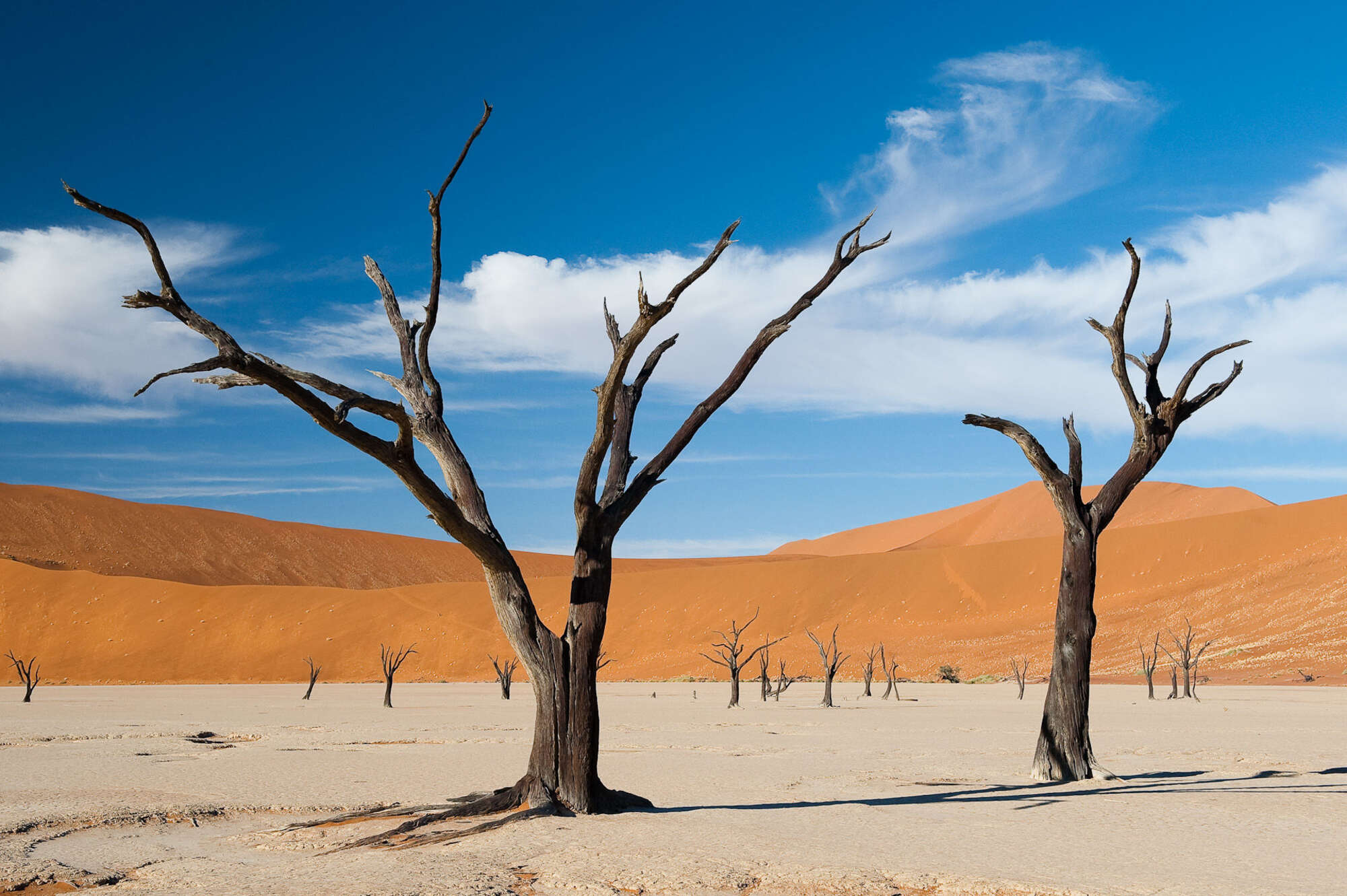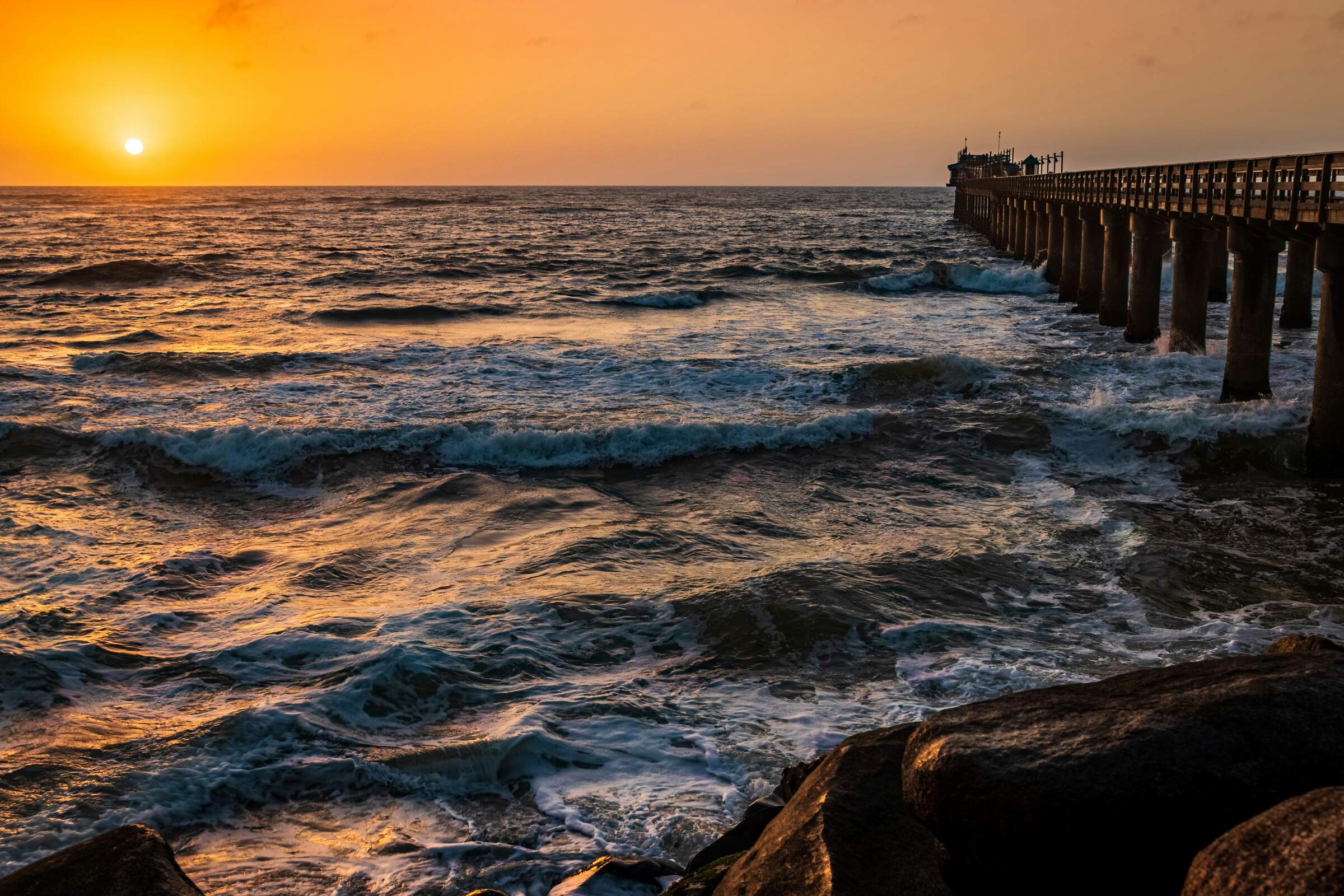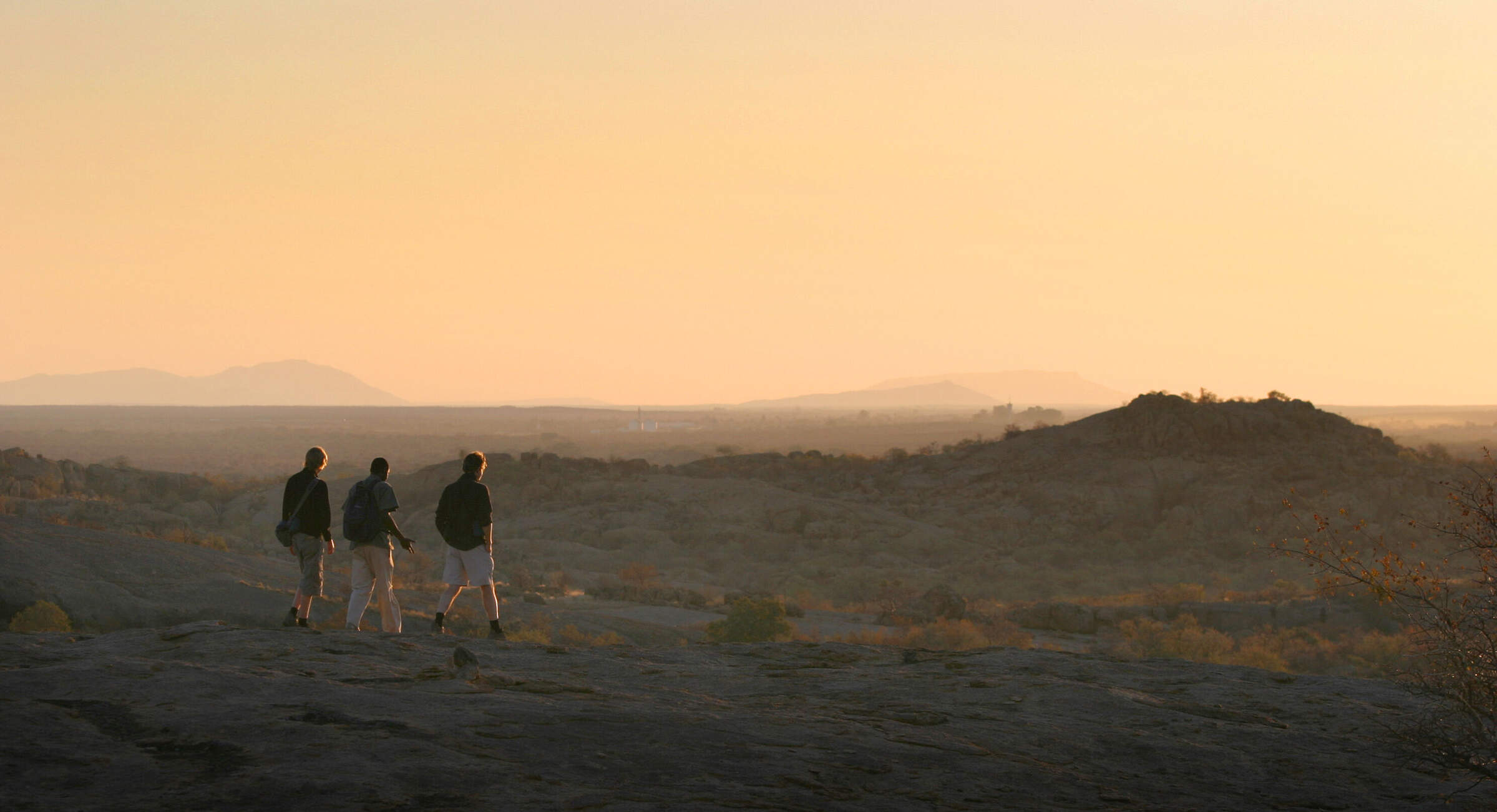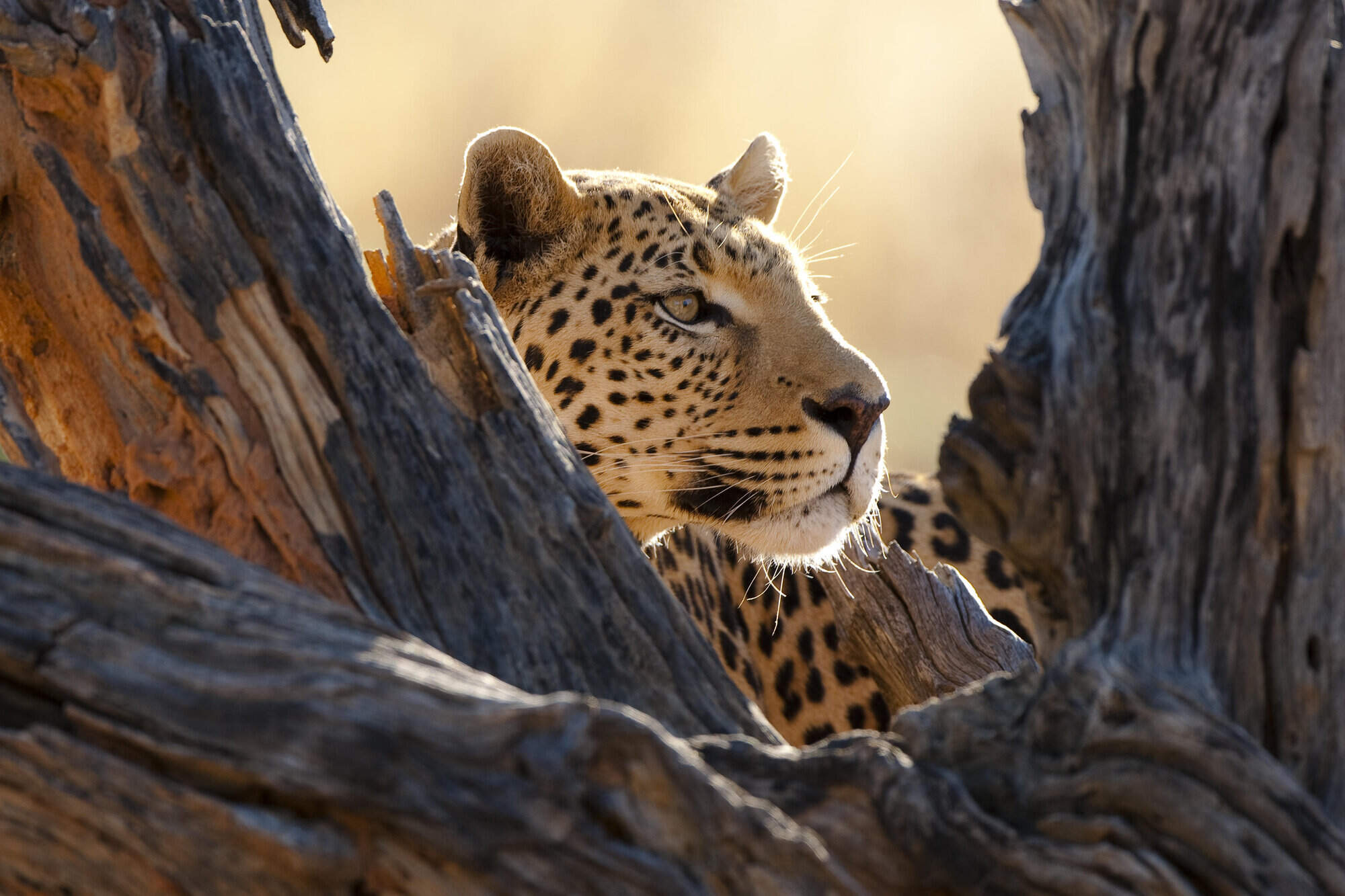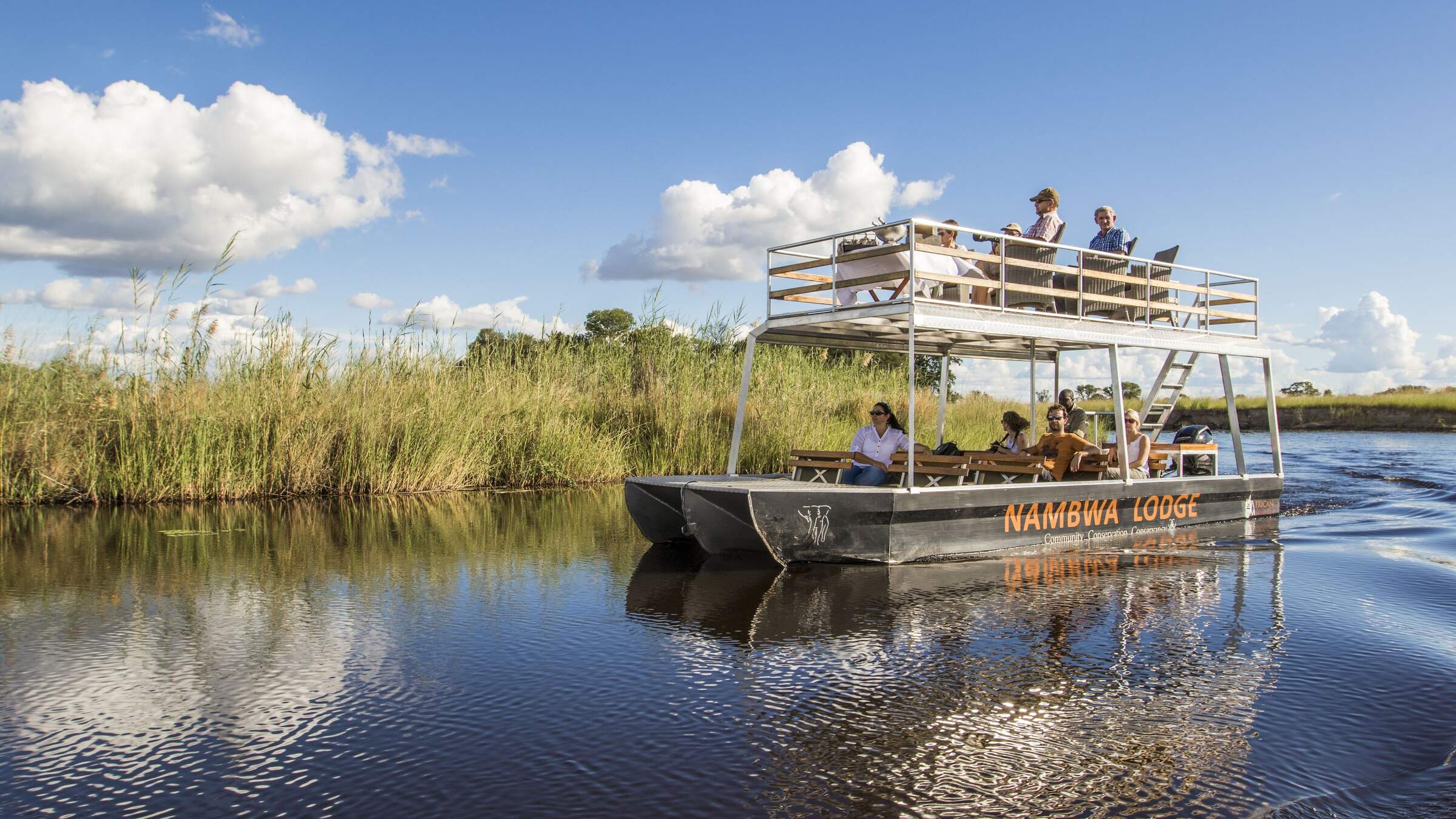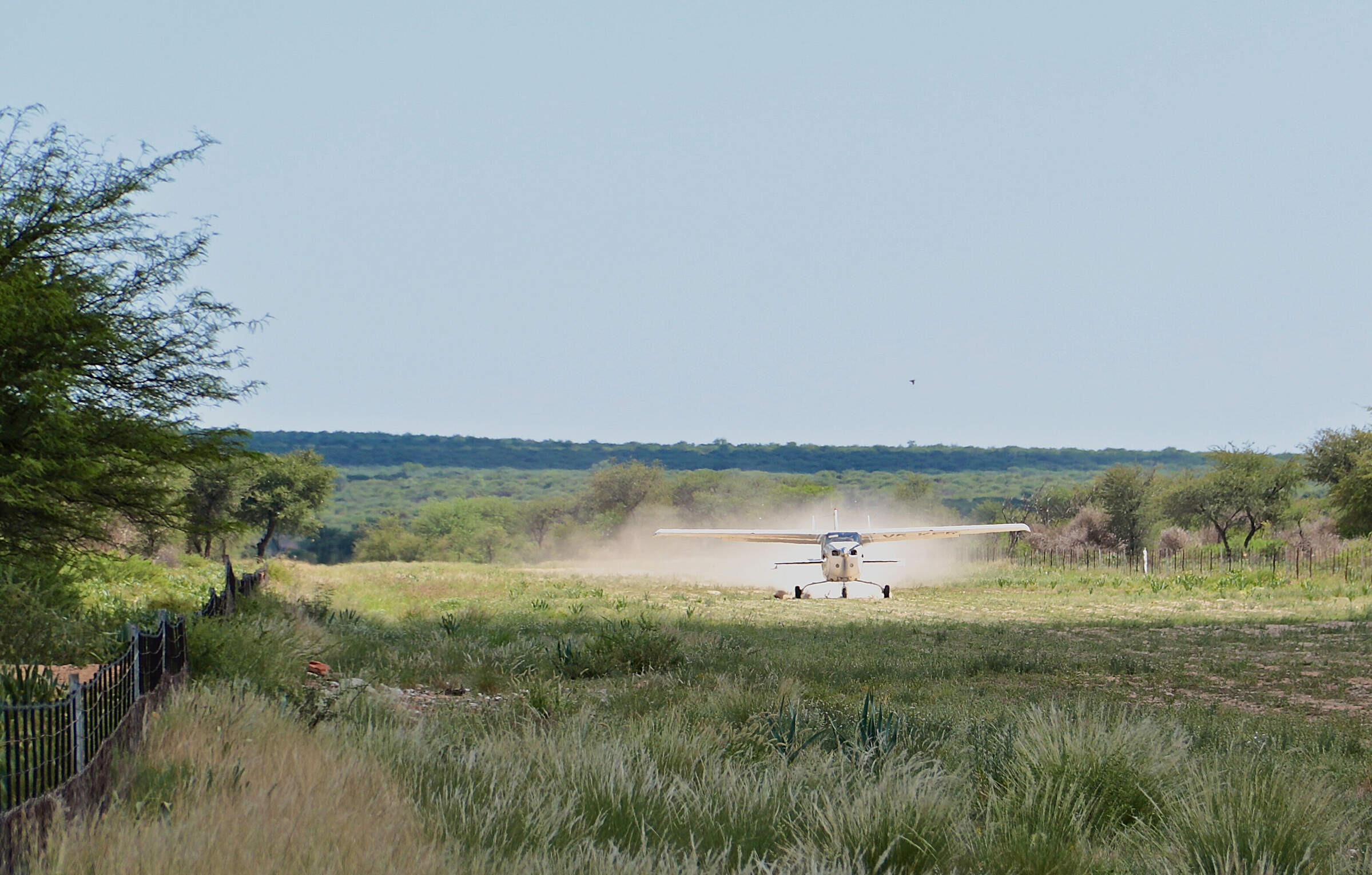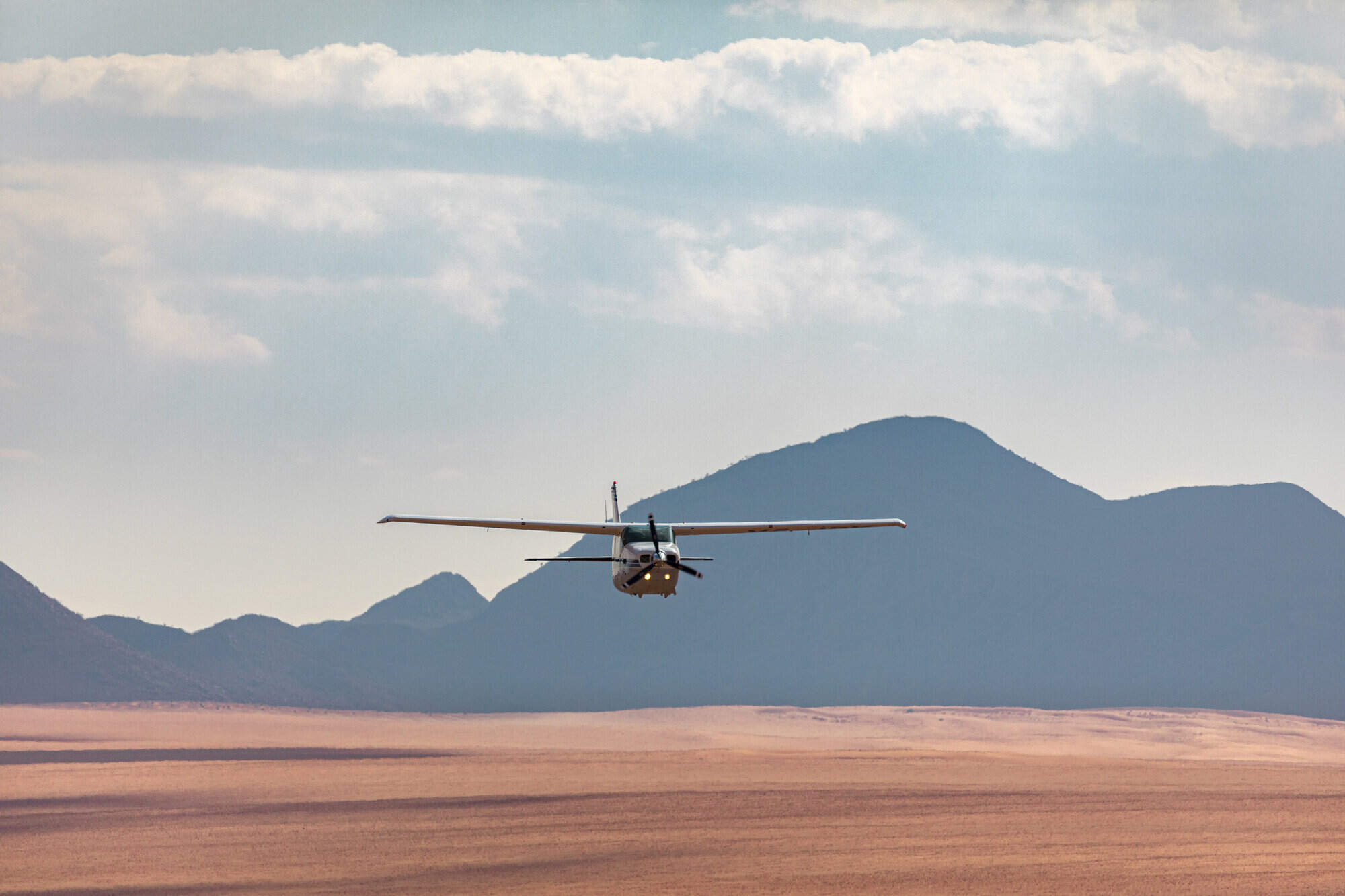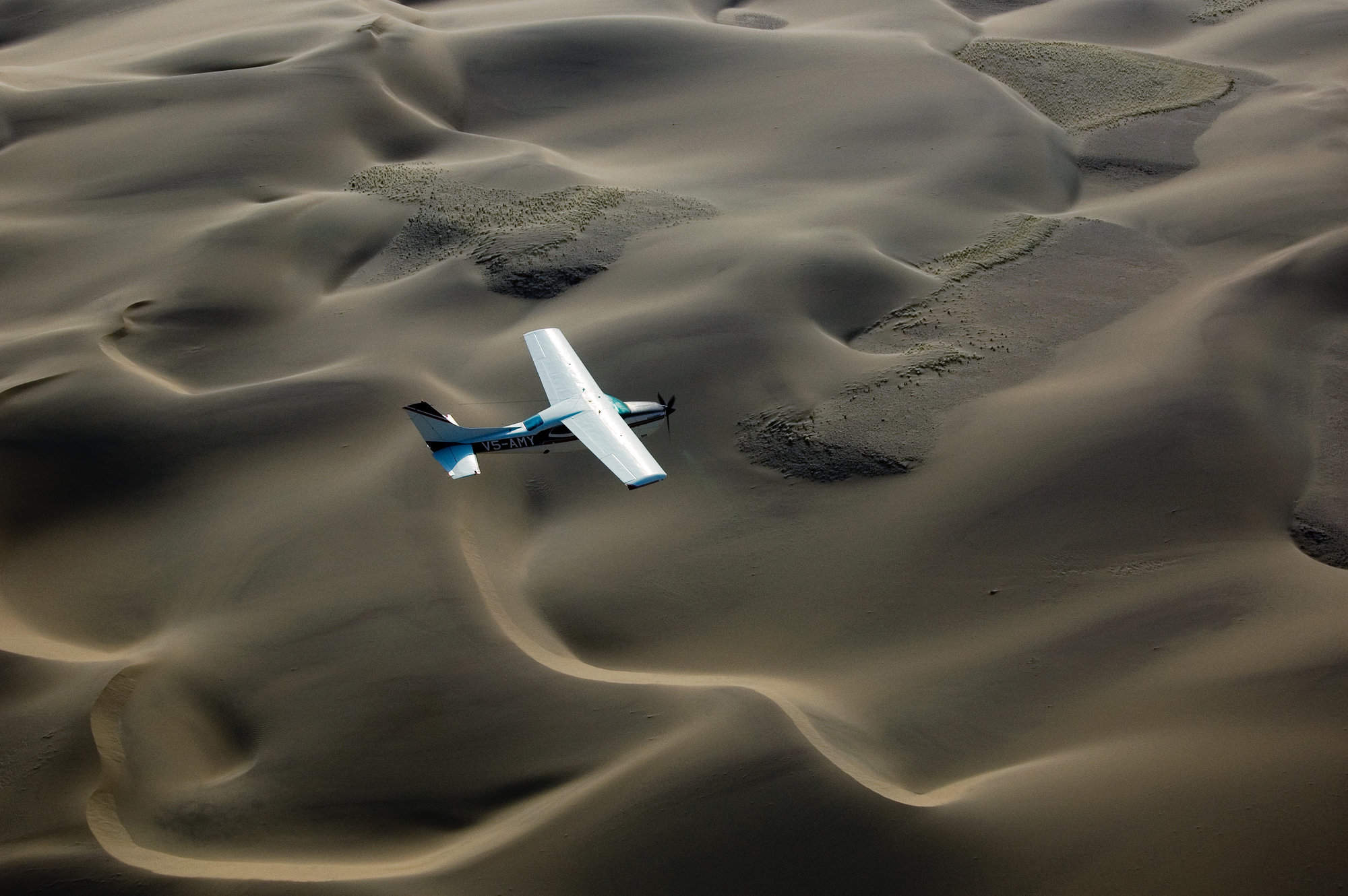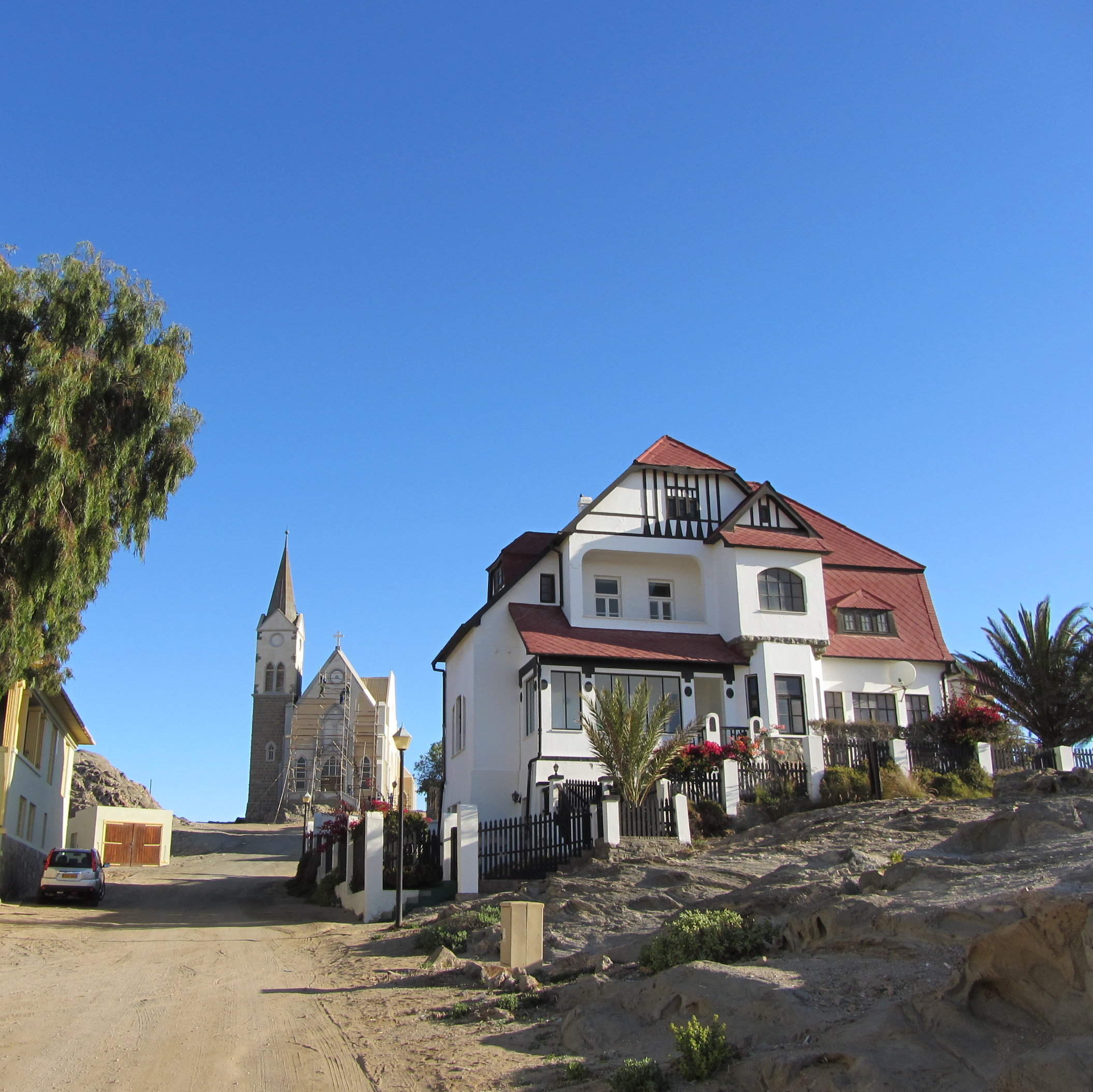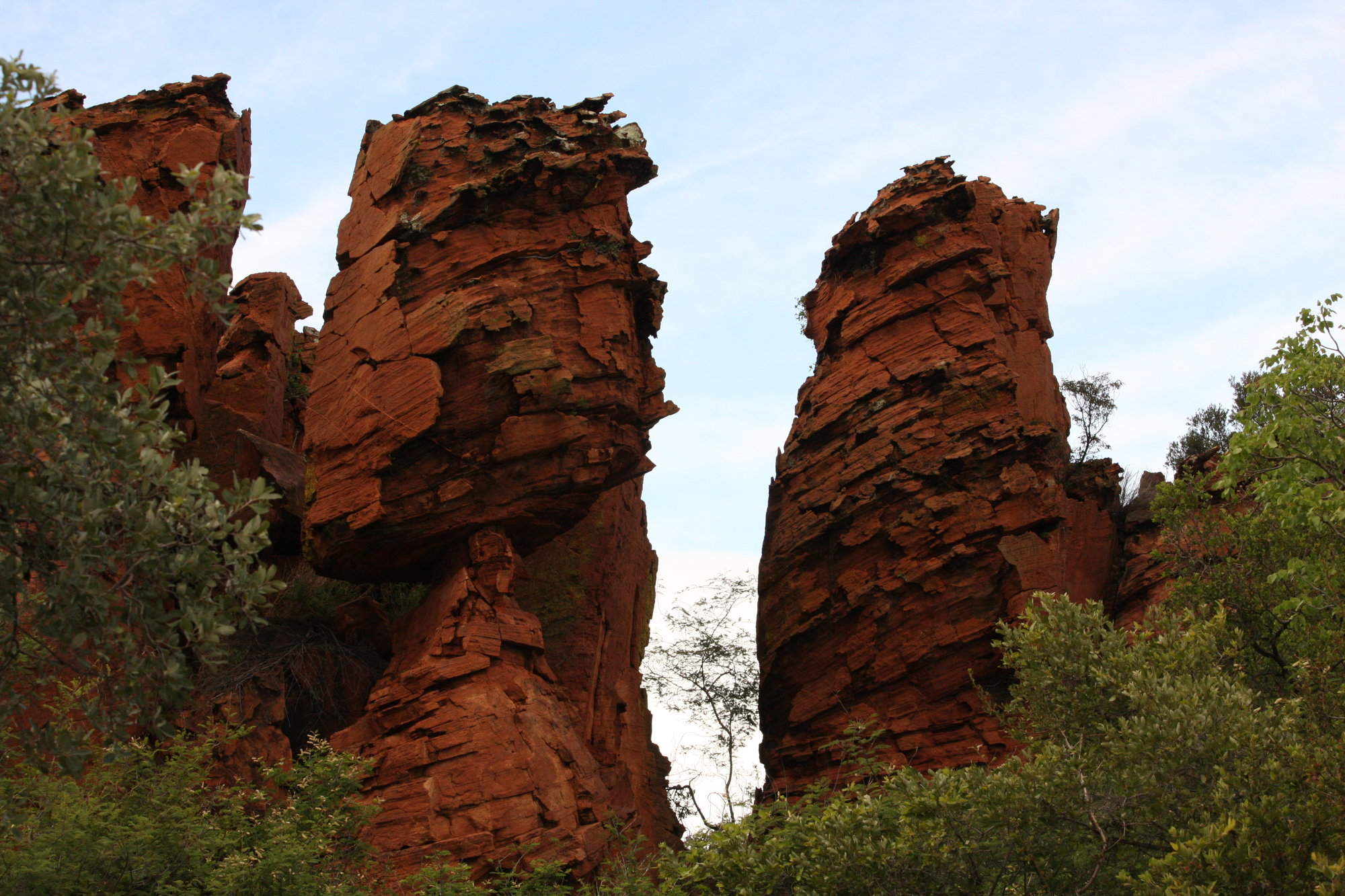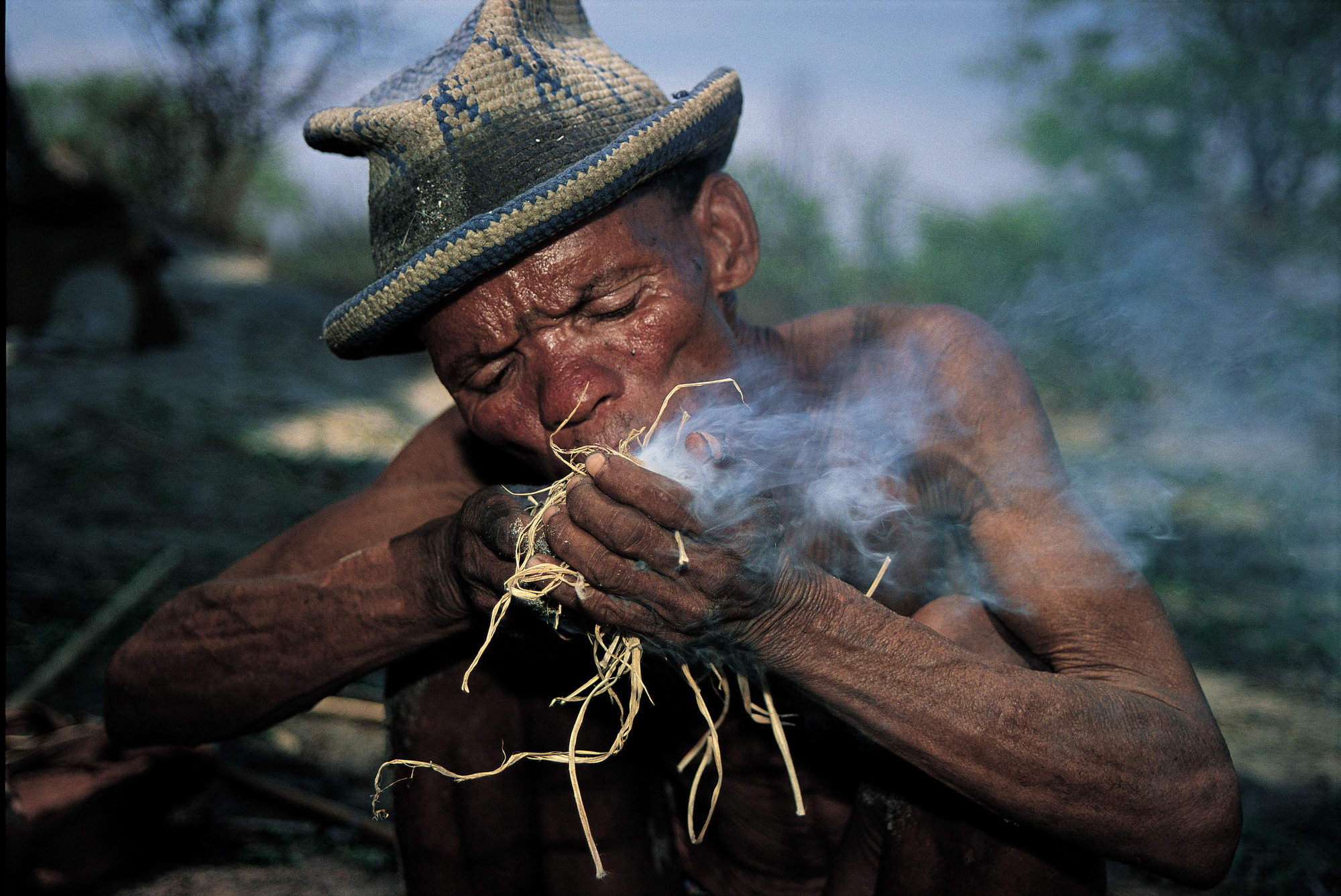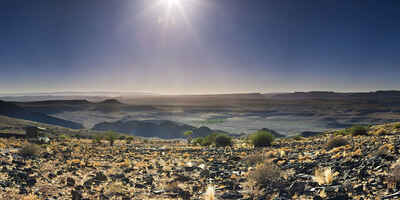
Africa's largest canyon and second biggest in the world
Fish River is one of many ephemeral rivers
great hiking
spectacular views
80km Fish River Hike takes 4-5 days.
take your pick of well appointed lodges
spectacular viewpoints along the rim of the canyon.
boundless panoramic rocky landscapes
Fish River Canyon
Fish River Canyon
To peer over the edge of the Fish River Canyon is to look down through layers of time.
It’s a heady sight, not for the vertiginous: eons of geological history unfolding right down to the river that snakes through the canyon far below.
Experts differ as to the canyon’s status. Is it the largest, widest, longest, deepest? In the face of such dramatic grandeur, such questions pale into insignificance. What really matters is the spectacle – and Fish River Canyon is genuinely, awe-inspiringly spectacular.
Sunrise over the canyon brings intense shadows and light to play on the rocks; as the day progresses, an ever-changing panorama unfolds in near-mesmerising succession. While many stop for just a short visit, it pays to spend longer here, if only to simply stand and stare.
At the northern end of the canyon, wander along the edge in search of different vantage points; at the southern end, where the terrain opens up near Ai Ais, it’s fun to walk up river a little way – if you can tear yourself away from the hot springs, and the spa. There are guided 4WD trips, and even mule trips. But to join up the dots on foot – that is an entirely different challenge.
Day hikes, overnight hikes or the full five-day expedition: all face an unforgiving terrain where vegetation is scarce, and water scarcer. Even in the cooler months, the overhead sun is relentless and shade is limited. Yet to be dwarfed by towering cliffs, or to look up after dark at the star-studded Namibian sky, is to feel at one with nature. Given the right preparation, the right kit, and plenty of care, this is without doubt one of the most rewarding places to walk in the world.
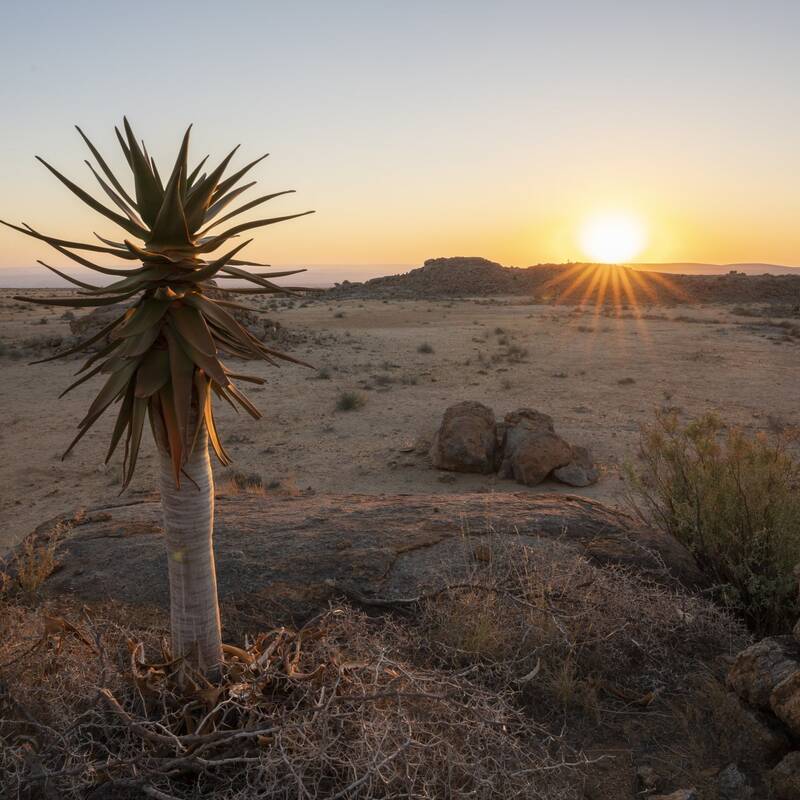
Trips visiting Fish River Canyon
Just ideas, we'll always tailor-make a trip for you
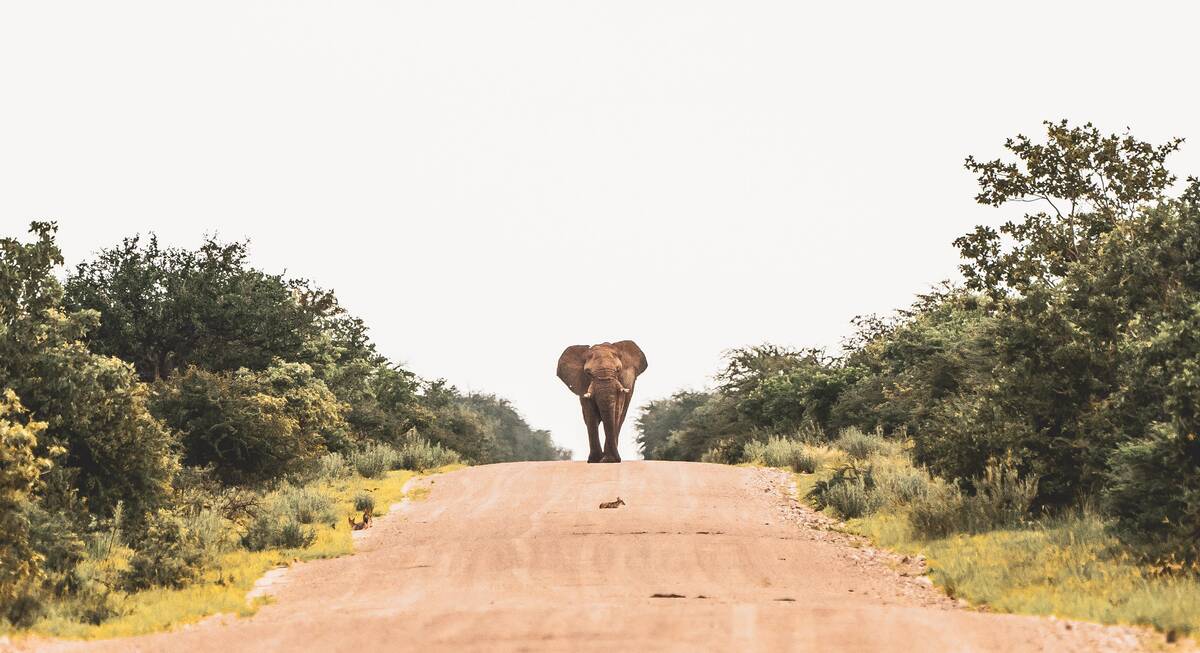
Black Wildebeest Self-drive Safari
19 days • 10 locations
CAPE TOWN AIRPORT TO WINDHOEK AIRPORT
Journey from South Africa’s cosmopolitan Cape Town to central Namibia’s Okonjima Nature Reserve during this self-driven safari. The route passes through a stunning variety of landscapes, offering access to this beautiful continent’s rich diversity.
US$4,160 - US$4,270 per person
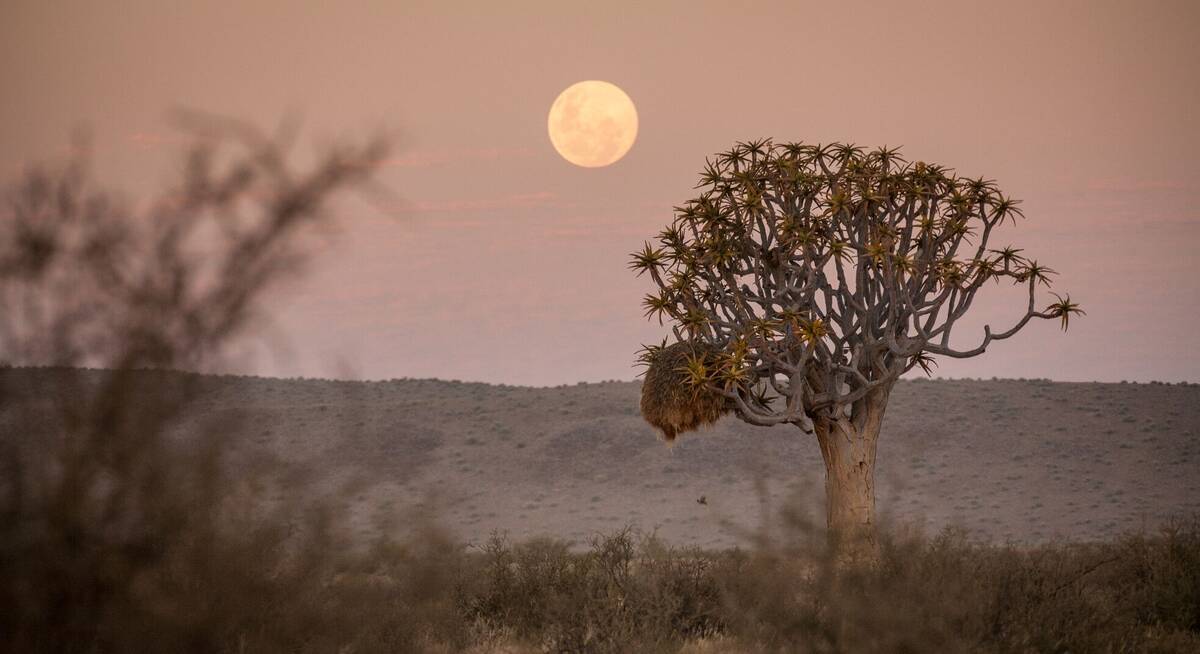
Quiver Tree Self-drive Safari
14 days • 7 locations
WINDHOEK AIRPORT TO WINDHOEK AIRPORT
An offbeat Namibian self-drive adventure exploring the epic Fish River Canyon and fascinating Kolmanskop ghost town in the south, before turning north via the classic highlights of Sossusvlei, Swakopmund and Damaraland.
US$3,480 - US$3,690 per person
Most recent reviews of our trips to Fish River Canyon
Click below to browse all 241 reviews from Fish River Canyon. All from our travellers; all are in full & unedited.
Arrived 7 Dec 2024, 12 nights
"My Dec 2024 trip to Namibia"
Overall rating: Excellent
Arrived 3 Nov 2024, 20 nights
"Cape Town to Fish River and back"
Overall rating: Excellent
Arrived 21 Sep 2024, 17 nights
"My Sep 2024 trip"
Overall rating: Excellent
Arrived 2 Sep 2024, 24 nights
"My Sep 2024 trip"
Overall rating: Excellent
Arrived 2 Sep 2024, 30 nights
"My Sept 2024 trip"
Overall rating: Excellent
Arrived 28 Aug 2024, 25 nights
"My Aug 2024 trip"
Overall rating: Excellent
Arrived 28 Aug 2024, 25 nights
"My Aug 2024 trip"
Overall rating: Excellent
Arrived 21 Jul 2024, 25 nights
"My Jul 2024 trip"
Overall rating: Excellent
Arrived 26 Jun 2024, 22 nights
"My Jun 2024 trip"
Overall rating: Excellent
Arrived 16 May 2024, 23 nights
"Our May 2024 trip"
Overall rating: Excellent
Where to stay in Fish River Canyon
Our suggestions for places to stay in Fish River Canyon
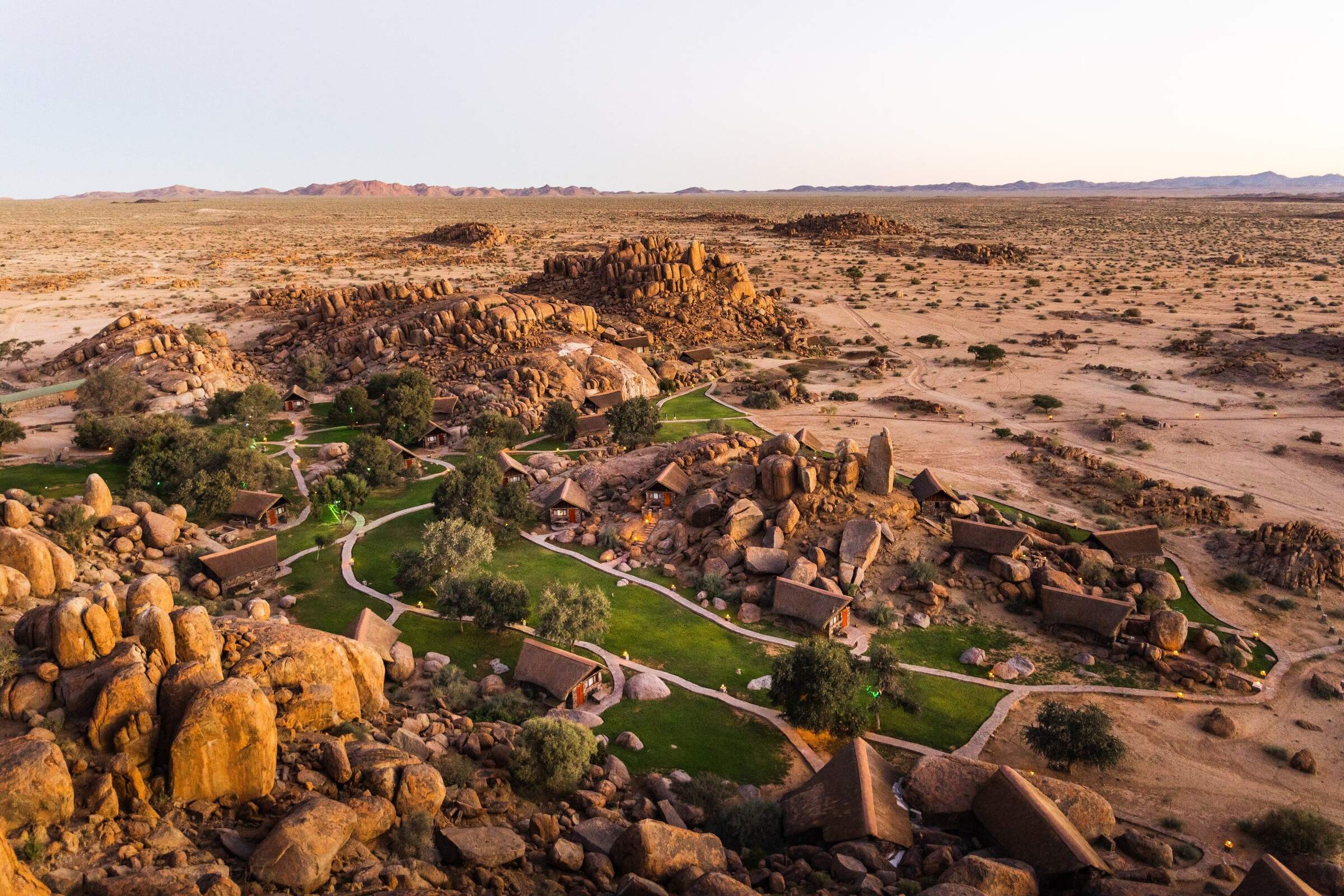
Canyon Lodge
Just 20km from Fish River Canyon, Canyon Lodge was the first lodge in the area, with individual chalets built amongst huge granite boulders.
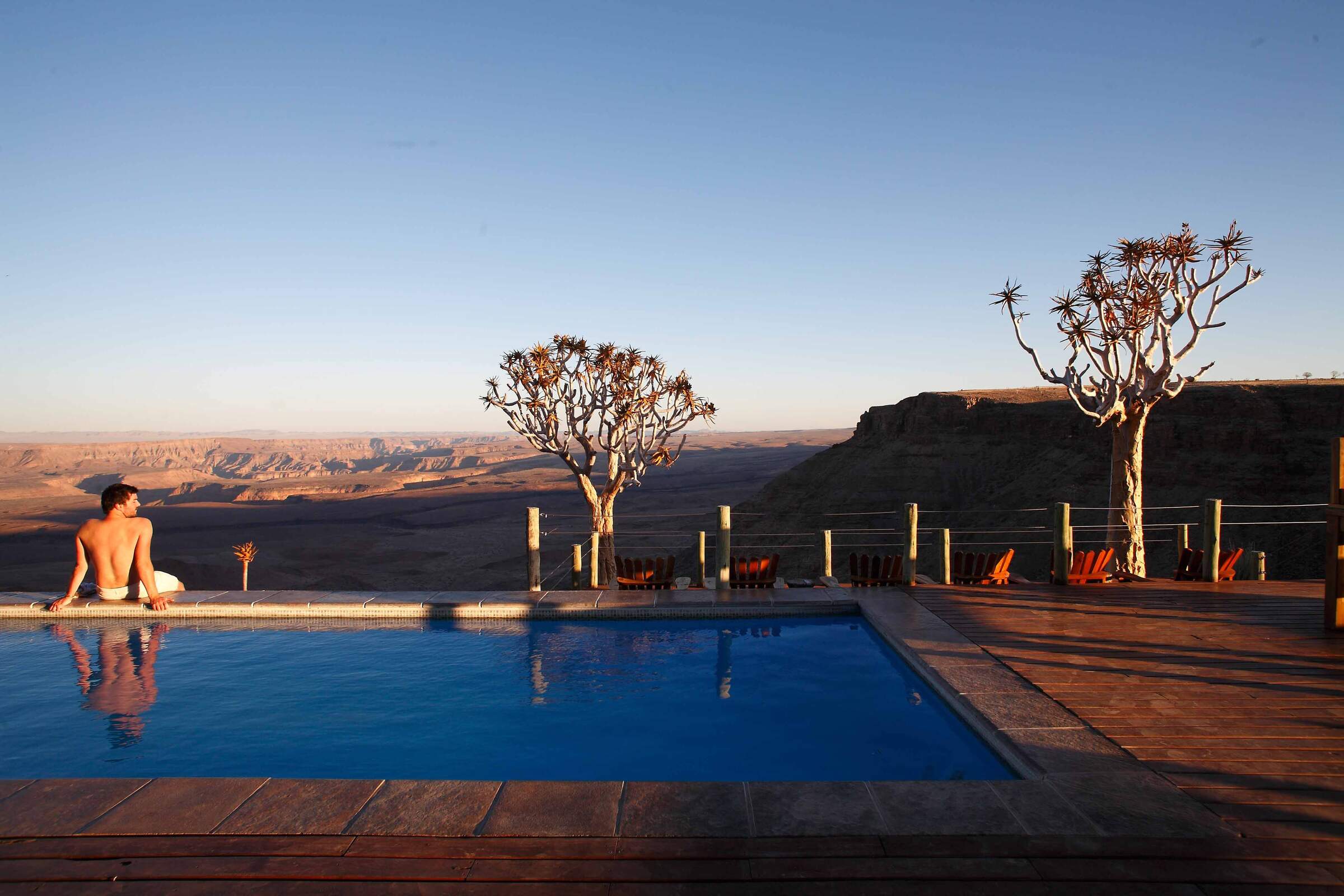
Fish River Lodge
Perched on the lip of Fish River Canyon, Fish River Lodge has some of the best views of any lodge in Namibia.
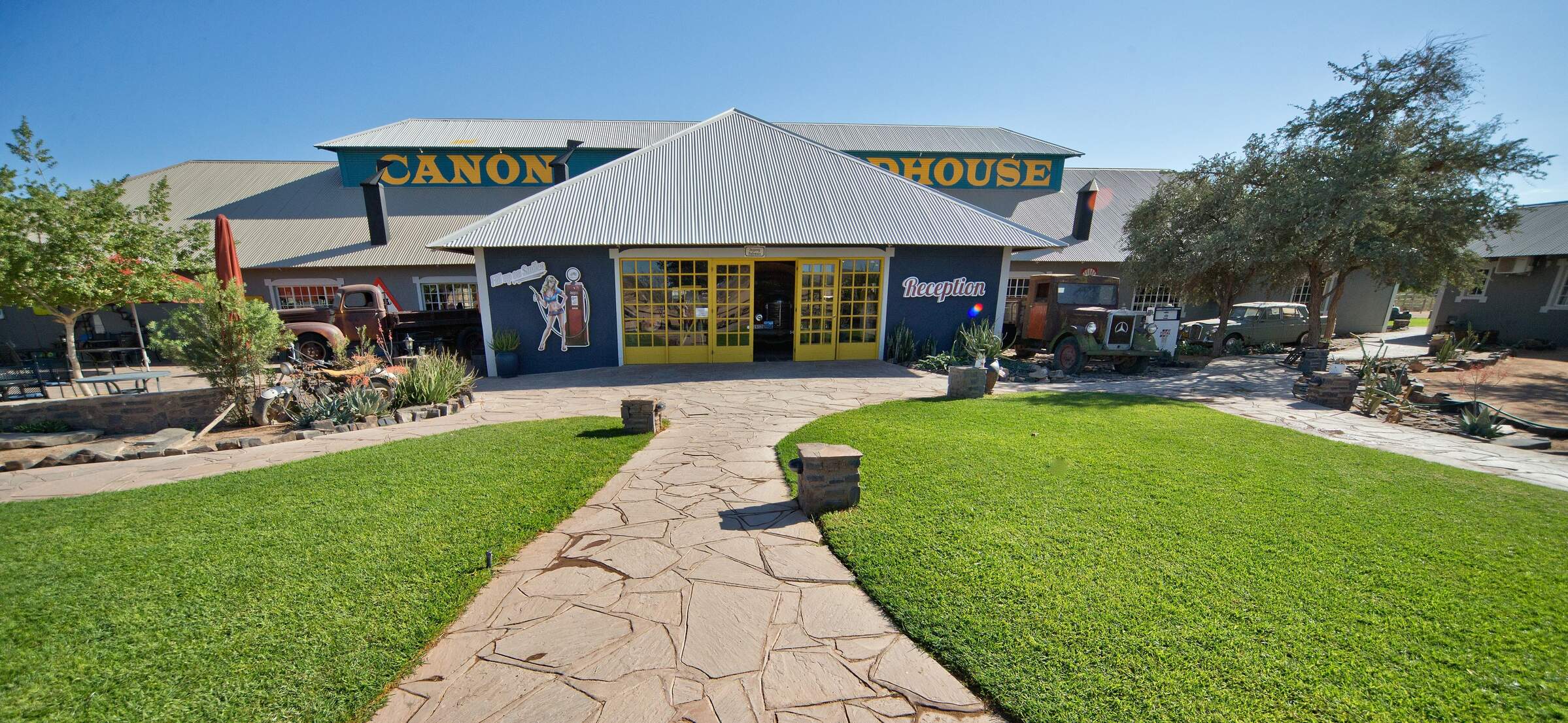
Canyon Roadhouse
Relatively close to Fish River Canyon, Canyon Roadhouse combines the feel of an old farm with an extraordinary array motor memorabilia.
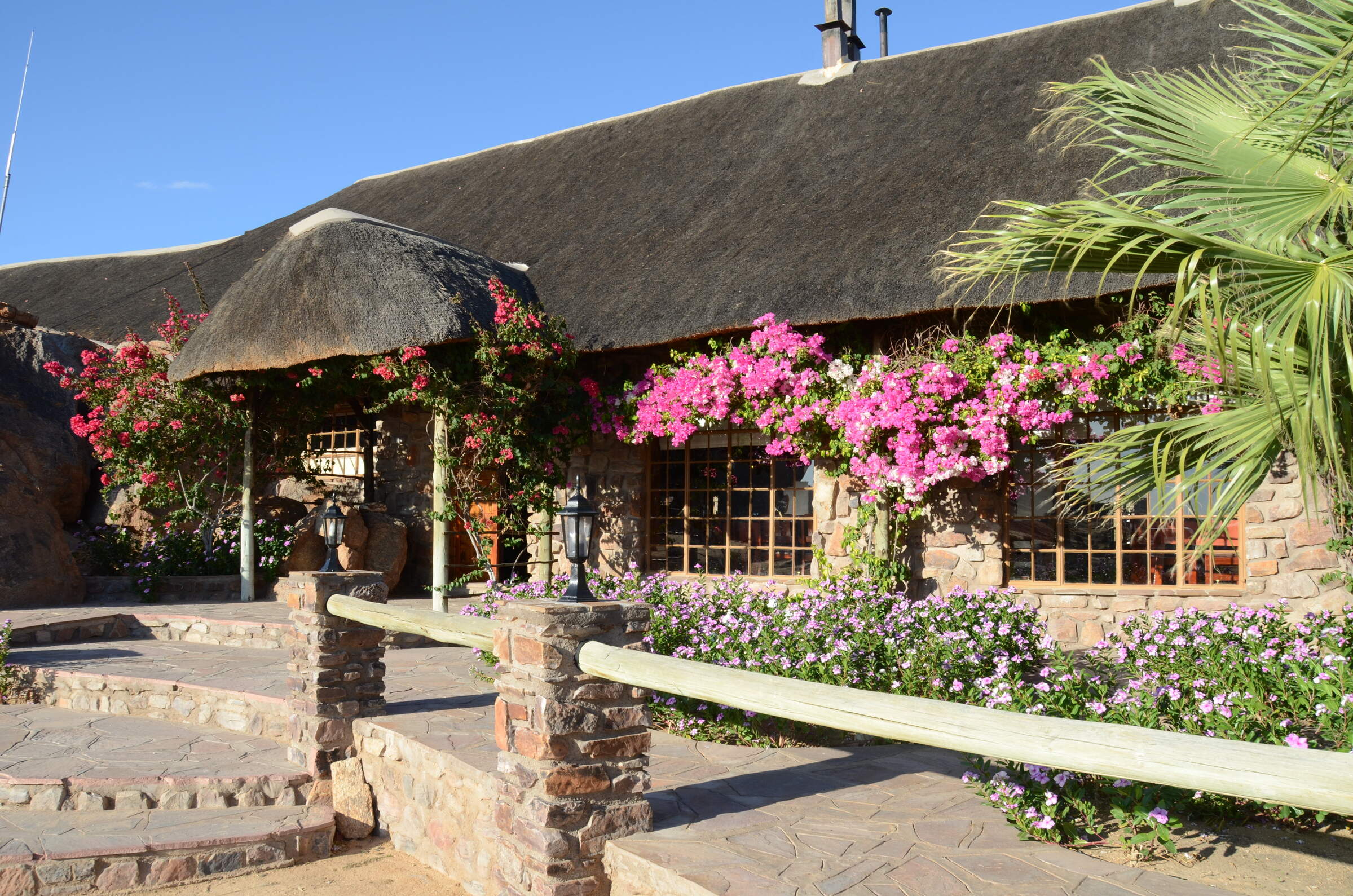
Canyon Village
Close to Fish River Canyon, the reasonably priced Canyon Village features interior walls covered in murals by Namibian artists depicting the history of the area.
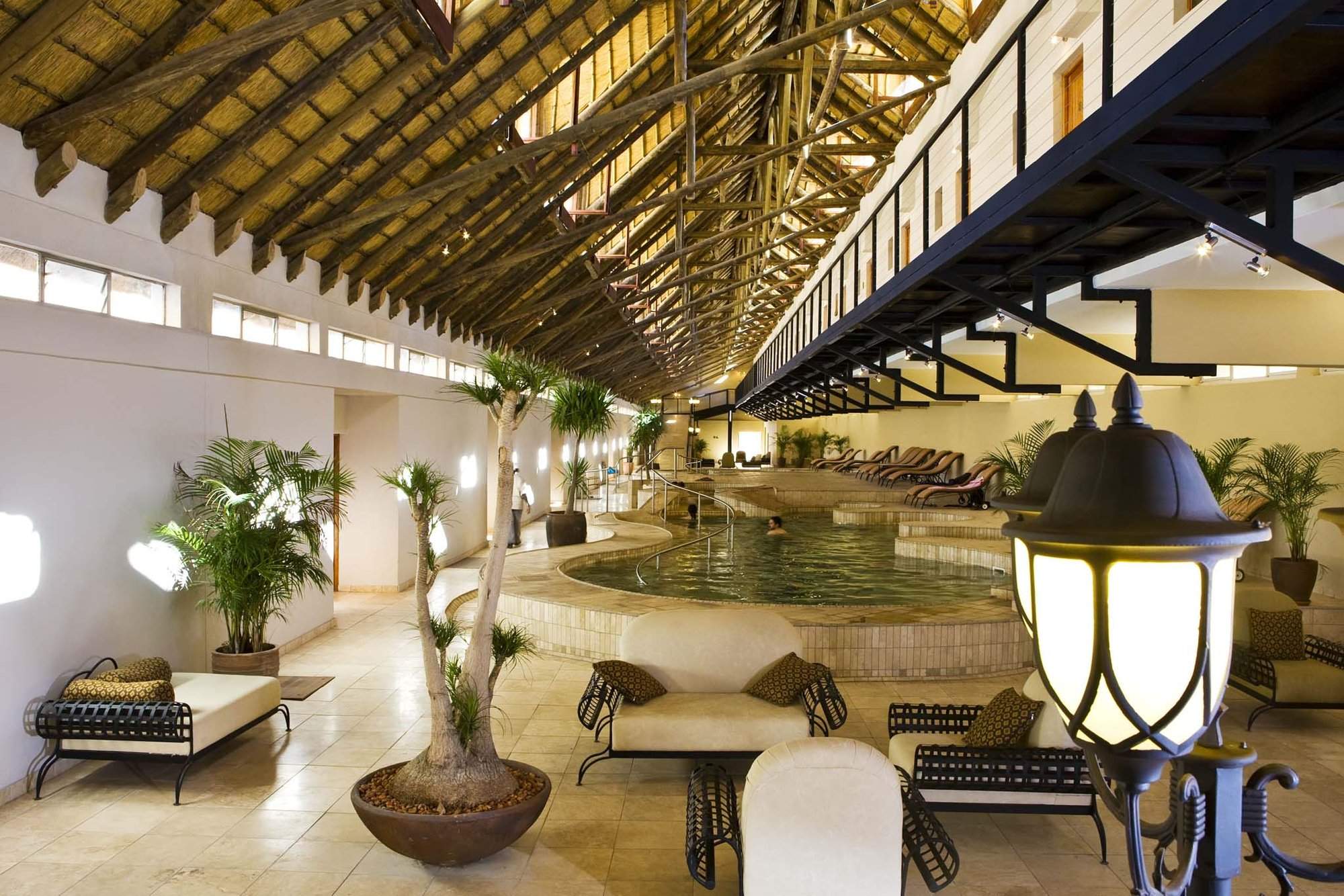
Ai-Ais Hot Springs Spa
The government-run Ai-Ais Restcamp is situated on a site of natural hot springs, down at the bottom of the Fish River Canyon.
Our travellers’ wildlife sightings in Fish River Canyon
This is their success for sightings in Fish River Canyon. Click on a species for more detail. How we work this out.

60% success

50% success

18% success

16% success

0% success

0% success

0% success
When to go to Fish River Canyon
Our month by month guide: What it's like to visit Fish River Canyon in Namibia
Jan
Feb
Mar
Apr
May
Jun
Jul
Aug
Sep
Oct
Nov
Dec
Namibia in January
January is at the heart of Namibia’s rainy season. However, as you’d expect from a country dominated by desert and semi-desert environments, the rains are often (but not always) weak and usually quite localised. Some days will be clear, the strong sun raising temperatures to around 30ºC/86ºF; on others humidity and clouds build, sometimes culminating in spectacular thunderstorms. In extreme cases, these generate flash-floods which race down the beds of ephemeral rivers.
Across the country, the greening landscape makes a refreshing change, especially in desert areas. Many birds are in full breeding plumage and migrant species are here in force. In the north, where the rains are more reliable, the abundant water and food allows wildlife to disperse, making it trickier to spot.
- Variable weather: clear, hot & dry, or cloudy & humid with some rain
- Occasional, highly localised thunderstorms
- Many animals with young; birdlife at its most spectacular
- Wildlife dispersed & harder to see, especially in Etosha & the Caprivi
- Very few tourists (apart from the New Year) so rates mostly low
Our view
This is not a great time to visit
Weather in January
Namibia in February
February is the wettest month, but as Namibia is dominated by deserts, the rains are often weak and patchy. The variation in weather across Namibia is significant, too; the central highlands and Caprivi can see some heavy rain. More typically, some February days are clear with a hot, strong sun; others are cooler as cloudy skies build and, sometimes, culminate in short, spectacular thunderstorms. Occasionally these generate flash-floods, bringing ephemeral rivers to life and making travel more challenging.
Across the country, the landscape feels green and alive; insects and smaller animals are more easily seen, and many birds and animals are raising their young. However, small pools in the bush and thicker vegetation can make it hard to spot the wildlife.
- Variable weather: clear, hot & dry or cloudy & humid with some rain
- Occasional localised thunderstorms meander over the landscape
- The bush feels alive; birdlife is at its most spectacular
- Wildlife in Etosha & Caprivi is dispersed & harder to see
- Few tourists, so rates usually at their lowest
Our view
This is not a great time to visit
Weather in February
Namibia in March
March usually sees Namibia’s main rains tailing off, although actual precipitation varies hugely across the country and can be unpredictable from day to day. Many days will be clear, with a strong sun driving temperatures up. On others, clouds will build, and the late afternoon may see a short, spectacular thunderstorm. Such deluges reduce in both frequency and volume as the month progresses.
Across the country, landscapes are often vivid: a “green and pleasant land”. Many birds and animals are finishing raising their young, so smaller animals and insects are in evidence. In the north, where rains are generally heavier, pools in the bush and thicker vegetation can make it difficult to spot larger animals.
- Variable weather: clear, hot & dry or cloudy & humid with some rain
- Afternoon thunderstorms less common as March progresses
- Animals looking sleek and well-fed, after 3–4 months of plenty
- Wildlife in Etosha & Caprivi is dispersed & harder to see
- Few tourists visit during March, so rates often low
Our view
A good time to visit, with pros & cons
Weather in March
Namibia in April
Typically, April is dominated by dry weather; there’s an ever-decreasing chance of rain. Temperatures are now below their peak and continue to fall. Even so, days remain pleasant and warm, but there might be a slight chill in the air at night. The rains usually leave many parts of the country verdant and green, so animals are in fantastic condition – often with fast-growing young in attendance.
With the dust washed out of the atmosphere, photographers make the most of clear air, spectacular landscapes and healthy animals. Stargazers will have clearer night skies as the month progresses. In the game parks of Northern Namibia, water and food remain in plentiful supply, so finding big game can prove trickier than later in the year.
- Becoming drier &, especially at night, also cooler
- Few visitors, except around Easter, so rates remain low
- Wildlife in Etosha & Caprivi remains relatively hard to see
- Migrant birds have started to leave
- Fresh, clean air and often green, verdant landscapes
Our view
A good time to visit, with pros & cons
Weather in April
Namibia in May
By May, Namibia is usually drying out fast as the rains have ended. If they’ve been good, then the land remains green, but wildlife starts to congregate at more permanent water sources. Over much of the country the air quality and clarity can be amazing, making this an ideal month for photography.
Typical days are warm, with crisp, clear mornings and clear blue skies. Evenings are usually cool, and temperatures may dip below 10ºC (50ºF) overnight. Many lodges still charge “low season” prices, although with Namibia’s increasing popularity in recent years, some have started to introduce higher “shoulder season” rates.
May’s good-value rates, increasingly good wildlife sightings, beautiful landscapes and crystal-clear air combine to make this one of our favourite months in Namibia.
- Lovely weather: dry, warm days & cool nights
- The country is drying out although many landscapes remain green
- Fantastic air clarity – ideal for keen photographers
- Visitor numbers are often still low, mirrored by lodge rates
- Wildlife is starting to congregate more around remaining water
Our view
A very good time to visit
Weather in May
Namibia in June
Namibia is dry again. Skies are blue and usually largely cloudless. Days are lovely: warm and dry; nights are cold, sometimes below freezing in the desert. Most swimming pools in Namibia are always outdoors, making them too cold for all except the very dedicated.
Take a warm hat and gloves for game drives, where dawn and dusk will feel particularly chilly. In the north, especially Etosha, wildlife viewing is now into its dry-season pattern, focusing around the waterholes – though the park is still not busy.
Photographers come for superb air clarity, with minimal dust or smoke in the air. Historically, June rates have been low. However, with Namibia’s increasing popularity many lodges now count it amongst their “high-season” months, and request higher prices.
- Clear, bright days with blue skies; cold nights, mornings & evenings
- Great air quality, especially welcome for photographers
- “Shoulder season” for some lodges: lodge rates moderate
- Wildlife gravitates to waterholes, making game-viewing productive
- Some greenery in the landscape, depending on the last rains
Our view
A very good time to visit
Weather in June
Namibia in July
Reliably warm daytime temperatures (upwards of 20ºC/70ºF) and good wildlife sightings make this a popular month to visit Namibia. Rain would be very unusual indeed and clear skies make for great photographs. Once the sun sets, though, temperatures cool rapidly bringing cold nights that may dip below freezing in the desert. Be prepared: dress in layers and expect early-morning and late-afternoon drives, and anywhere coastal, to be cold.
As the land dries and vegetation shrivels, game congregates beside drinking water: Etosha’s waterholes are busy with animals. Across the country, lodges charge “high season” rates; many are fully booked a year or more in advance, especially during European school holidays (from the latter half of July to late August).
- Dry days, warm in the sun, with crisp, cold nights
- Cloudless skies: July is usually superb for stargazing
- The beginning of European school holidays so more families travelling
- Peak season: so high rates and many lodges fully booked far in advance
- A fantastic time of year for wildlife watching, particularly in Etosha
Our view
A very good time to visit
Weather in July
Namibia in August
August is the height of Namibia’s “winter”. Expect cloudless skies and plenty of warm sun in the day, but nights down to freezing in the desert. Dress in layers and bring warm clothes (including hats and gloves) for chilly starts and evenings. Only the hardiest even contemplate using outdoor pools.
It’s 3–4 months since any rain, so the land is dust-dry and much vegetation is golden brown. Many landscapes appear sparse and harsh. Wildlife congregates around available water sources, helping to guarantee good animal sightings.
Namibia is never really “busy” by the standards of Europe or the USA, but August is the most popular time to visit, especially for families. Book early (over a year in advance) if you want to stay at the best lodges.
- Dry days, warm in the sun; cold mornings, evenings & nights
- Cloudless skies in the day; spectacular stars at night
- Busy by Namibian standards: family rooms in particular demand
- Peak season: so high rates and many lodges fully booked far in advance
- A fantastic time of year for wildlife watching, particularly in Etosha
Our view
Fantastic: the very best time to visit
Weather in August
Namibia in September
September is a month of blue, cloudless skies and fantastic wildlife viewing. Rain is almost unheard of. As the month progresses, the days and nights get warmer. In some areas, daily maximums hit around the low 30s Celsius, although low humidity ensures this feels comfortable. The contrast makes the nights seem very cold. The air is becoming dustier, occasionally augmented by smoke from fires – so becoming hazy for photographic purists.
In the national parks, animals congregate around remaining water sources – making September one of the best months for game viewing. Hence it’s one of Namibia’s most popular months for visitors: a “high season” month that is often the time of choice for safari aficionados.
- One of the best months for wildlife viewing
- Warm days & cold nights, with temperatures rising during the month
- Many plants have faded from green to golden brown
- Air can be hazy – with dust & sometimes smoke
- High season rates; many lodges & camps are full 9 months in advance.
Our view
Fantastic: the very best time to visit
Weather in September
Namibia in October
Namibia is usually at its hottest and driest in October. Temperatures build as the month progresses; towards the end, daily highs may exceed 40ºC/100ºF, though with humidity close to zero, even this rarely feels oppressive.
In exceptional years, isolated rain showers may fall in late October. More usually, the end of the dry season sees wildlife watching at its best, particularly in Etosha. The place feels like a desert as spectacular herds of thirsty animals gather around the available water. October is popular amongst wildlife enthusiasts and commands peak-season prices, even if dust and smoke may make the air hazy, challenging photographers. Visitor numbers can fade towards the end of the month, allowing a window for last-minute bookings.
- Probably the most spectacular month for wildlife-viewing in Etosha
- Hot and dry: much of the country feels like a desert
- The air can be hazy with dust & smoke
- It’s peak time to visit, so expect high season rates
- Lodges & camps are full, especially early in October
Our view
A very good time to visit
Weather in October
Namibia in November
November is always a bit unpredictable: sometimes dry and hot; sometimes cloudier and cooler. Typically, mornings are hot and cloudless and clouds appear in the afternoon. Humidity builds and eventually breaks, resulting in spectacular thunderstorms that bring convection rainfall in late afternoons. Such storms are typically sparsely distributed and highly local – being completely absent from desert areas, for example. Places that do get good rain will flush green, with a tangible feeling of new life softening the landscapes. Many mammals give birth to their young.
Once any rains come, wildlife dissipates in search of food, and game viewing in Etosha becomes harder. Conversely, this is a great time for birdwatchers, with migrant species in breeding plumage.
- A very interesting, variable month, depending on the rains
- With rains come an amazing explosion of both vegetation & new life
- Wildlife viewing better in Damaraland than Etosha if it has rained
- Shoulder season: mid-range rates offer great value
- Away from the Namib, showers are more likely later in the month
Our view
A good time to visit, with pros & cons
Weather in November
Namibia in December
December is the first “proper” month of Namibia’s rainy season, and one of its hottest. Clear mornings give way to building clouds and, with luck, the occasional short, spectacular thunderstorm: refreshing and cleansing. These are often highly localised and generally warmly welcomed: most Namibians love rain!
Rains clear the air of dust. Even relatively short showers enable plant life to erupt, carpeting this thirstland in green and providing food for the young animals which abound. Animals disperse widely, which can make game viewing challenging. Many birds are breeding and so sporting their most colourful plumage.
Christmas and the New Year fall within local “summer holidays” – so places to stay can be surprisingly busy, especially in and around coastal towns, where temperatures are cooler.
- Hot and humid; sometimes refreshed by cooling showers
- Landscapes flushed green if/where there has been rain
- A tangible life and energy amidst this often green & pleasant land
- Very photogenic: blooming deserts amidst crystal-clear air
- Best time for birdwatchers; larger animals harder to spot
Our view
This is not a great time to visit
Weather in December
Fish River Canyon: In detail
Fish River Canyon
In the far south of Namibia, the Fish River rises in the centre of the country, before flowing south into the Orange River, on Namibia’s border with South Africa.
In between, it has formed the great Fish River Canyon – the largest canyon in the southern hemisphere, and probably only second to Arizona’s Grand Canyon in terms of size. Approaching the Fish River Canyon from the north is like driving across Mars. The vast rocky landscape breaks up into a series of spectacular cliffs, formed by the Fish River as it meanders between boulders over half a kilometre below. Its size is impressive: 161km long, up to 27km wide and almost 550m at its deepest. Keep in mind that the river is seasonal and generally flows only in the rainy season, from January to April.
Most of our visitors who come to the Fish River Canyon will come for a few days as part of a self-drive holiday around the country; flying here can be costly, and there are currently no scheduled planes flying this way. Below are the main attractions and more background to the area:
Ai Ais National Park
Flora and fauna
Birds, too, are around but often not obvious. This isn’t a centre for birdwatching, as only about 60 species are thought to live here, but look out for the majestic black eagle, as well as the rock kestrel and rock pigeon, and especially for the localised yellow-rumped eremomela which occur near Ai-Ais. Karoo bustards and ostrich are the highlights of the open plains above the canyon. In the canyon itself, herons, cormorants and kingfishers take advantage of the river’s bounty, while both martins and mountain wheatear keep the hiker company from above.
Vegetation is sparse. Both on the top and on the canyon’s slopes, the larger species are mostly euphorbias, with the odd quivertree and occasional deep red aloe, Aloe gariepensis. However, parts of the canyon’s base where there is water are quite lush – like the Sulphur Springs with its palm trees and further south towards Ai-Ais. There you can expect camelthorn, wild tamarisk and ebony trees, amongst others.
Hiking in the Fish River Canyon
For a slightly less demanding options, ask us about the shorter hikes, plus a full five-day fully supported hike, organised by Fish River Lodge in the Canyon Nature Park – slightly up-river from the national park, on the western side.
Geology of the Fish River Canyon
Africa’s Largest Canyon?
History of the canyon
Around the beginning of this century, the Ai-Ais area was used as a base by the Germans in their war against the Namas. It was finally declared a national monument in 1962. Ai-Ais Restcamp was opened in 1971.
Map of Fish River Canyon
Choices for where to stay in Fish River Canyon
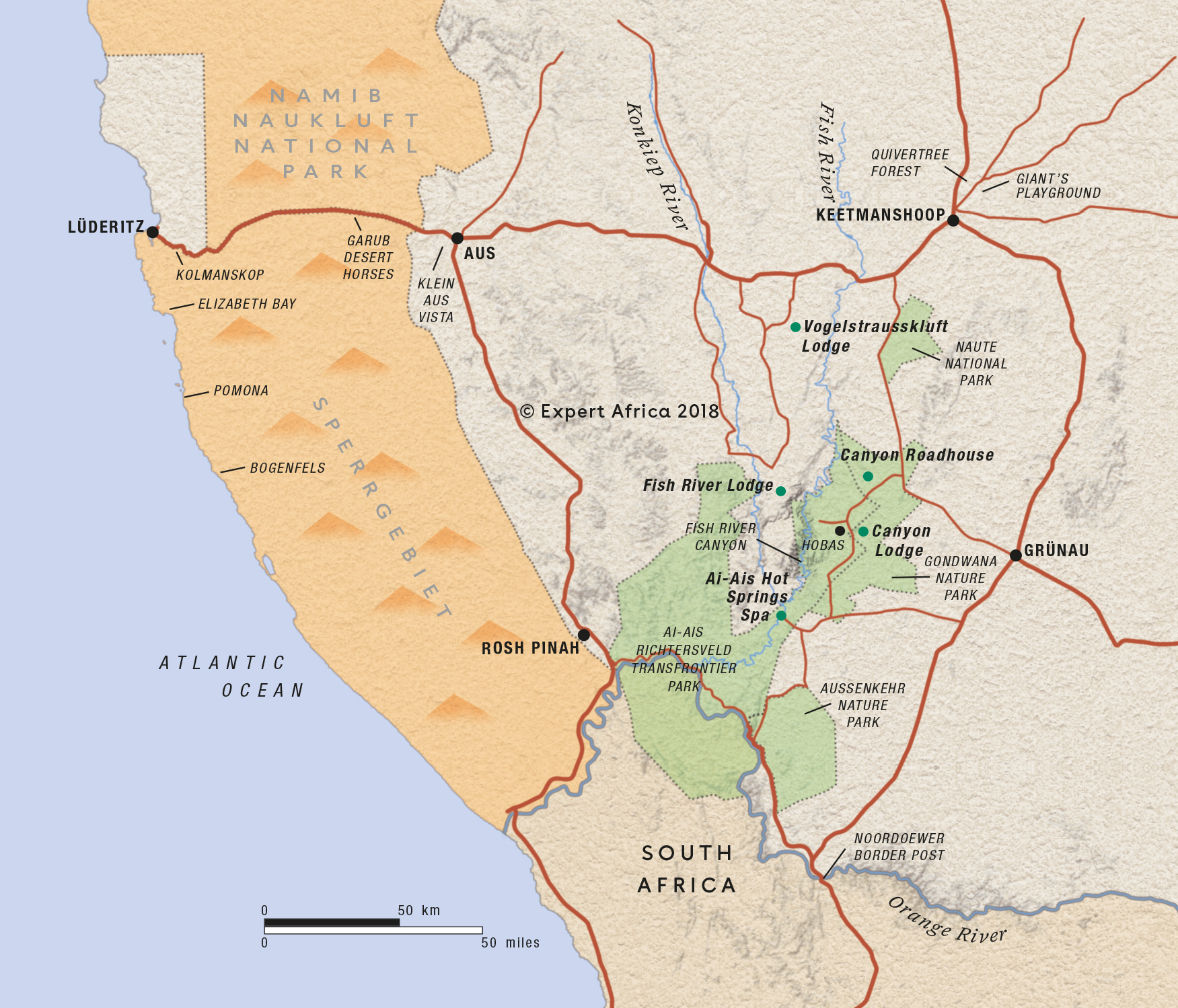
Fish River Canyon: Holidays
Namibia’s Fish River Canyon is not to be missed. It’s the largest canyon in the southern hemisphere, and boasts breathtaking landscapes and some interesting flora and fauna. A holiday to the Fish River Canyon works very well as part of a longer trip to visit other areas of Namibia, or a more focused southern Namibia tour, as you can see in our Trip Ideas below.

Black Wildebeest Self-drive Safari
19 days • 10 locations
CAPE TOWN AIRPORT TO WINDHOEK AIRPORT
Journey from South Africa’s cosmopolitan Cape Town to central Namibia’s Okonjima Nature Reserve during this self-driven safari. The route passes through a stunning variety of landscapes, offering access to this beautiful continent’s rich diversity.
US$4,160 - US$4,270 per person

Quiver Tree Self-drive Safari
14 days • 7 locations
WINDHOEK AIRPORT TO WINDHOEK AIRPORT
An offbeat Namibian self-drive adventure exploring the epic Fish River Canyon and fascinating Kolmanskop ghost town in the south, before turning north via the classic highlights of Sossusvlei, Swakopmund and Damaraland.
US$3,480 - US$3,690 per person
5 of our best hotels and places to stay in Fish River Canyon
There are many possibilities to find an accommodation around the canyon with some incredible views. Listed below are some of our favorite places to stay.

Canyon Lodge
Just 20km from Fish River Canyon, Canyon Lodge was the first lodge in the area, with individual chalets built amongst huge granite boulders.

Fish River Lodge
Perched on the lip of Fish River Canyon, Fish River Lodge has some of the best views of any lodge in Namibia.

Canyon Roadhouse
Relatively close to Fish River Canyon, Canyon Roadhouse combines the feel of an old farm with an extraordinary array motor memorabilia.

Canyon Village
Close to Fish River Canyon, the reasonably priced Canyon Village features interior walls covered in murals by Namibian artists depicting the history of the area.

Ai-Ais Hot Springs Spa
The government-run Ai-Ais Restcamp is situated on a site of natural hot springs, down at the bottom of the Fish River Canyon.
Excursions in Fish River Canyon
Optional, extra day-trips and excursions that are possible while you’re staying in Fish River Canyon. Talk to us: these excursions are usually best arranged before you go.
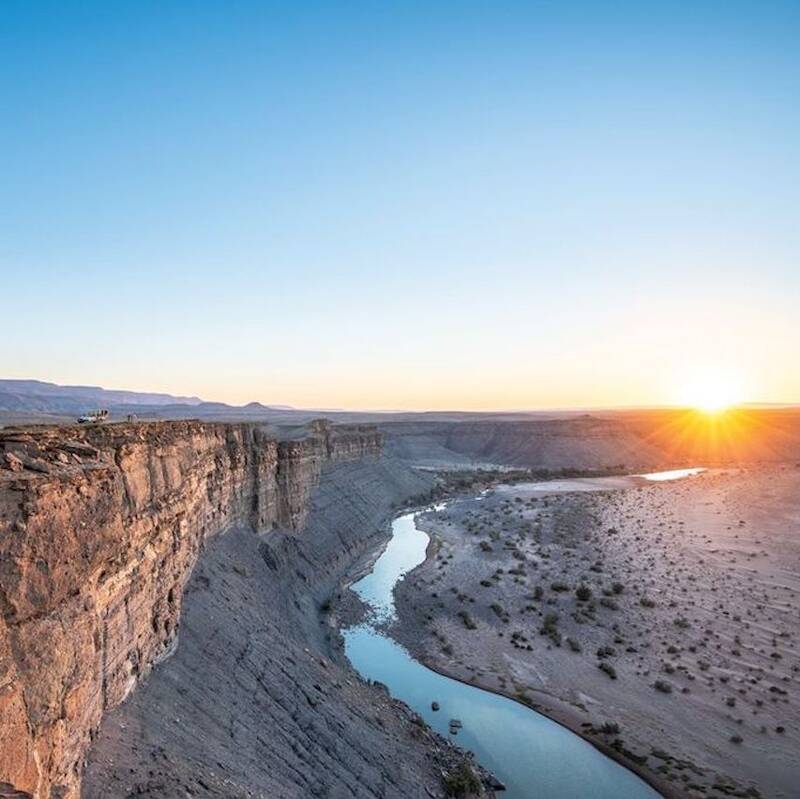
Fish River Canyon day trip
Half-full day (starting early morning)
An exhilarating descent down into the canyon, marvelling at the stunning geographical features of this vast canyon, followed by lunch and a dip in the natural rock pools – this day trip is exciting and enlightening!
More about Fish River Canyon trip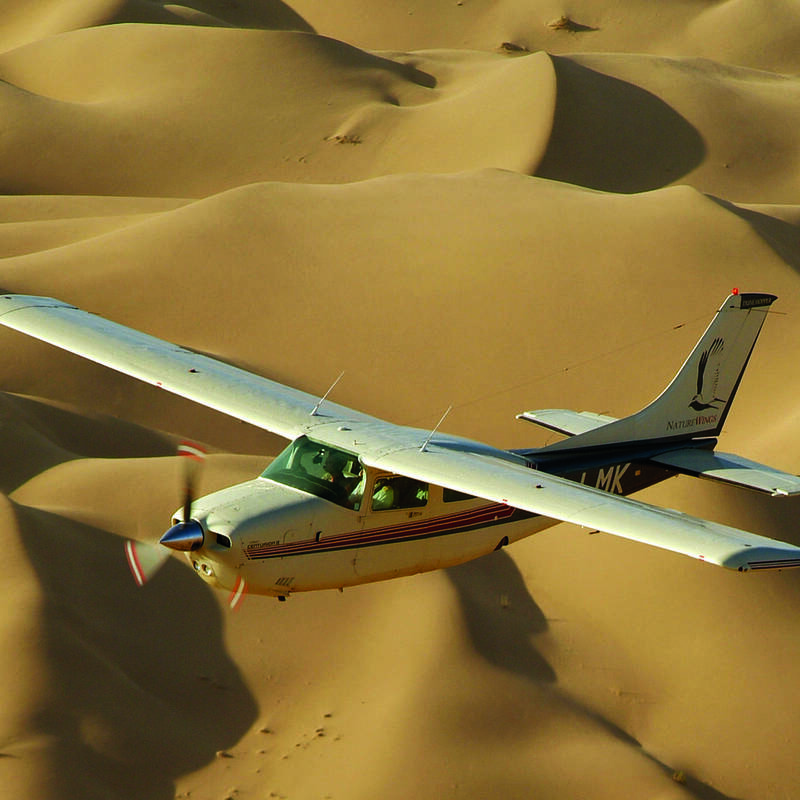
Scenic flights in Namibia
Variable, depending on the flight
Namibia is famed for its stark beauty and boundless desert vistas and there is no better way to soak these in than from the air. A scenic flight gives you a unique perspective on this stunning and varied country, and may even provide a bird’s-eye view of areas that are out of reach to those restricted to terra firma.
More about Scenic flights
Looking for inspiration on where to travel next?
Visit our trip chooser to explore your options and find inspiration for your perfect African adventure
Inspire me